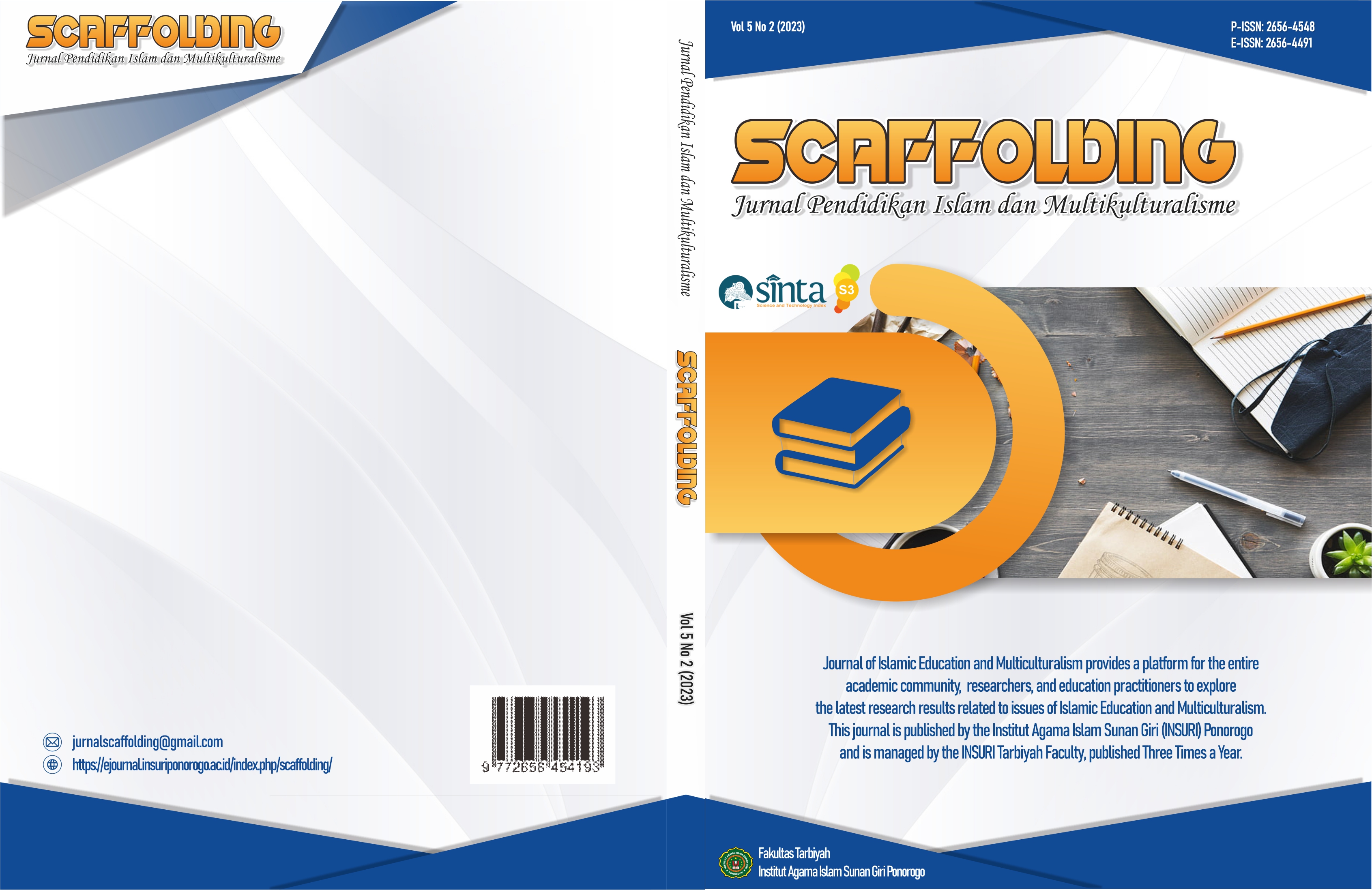Analyzing the Mission and Strategy of Berani Hijrah Community on Developing Islamic Religious Education
DOI:
https://doi.org/10.37680/scaffolding.v5i2.3019Keywords:
Islamic Religious Education; Komunitas Berani Hijrah; Young GenerationAbstract
The main purpose of this research is to analyze the mission and strategies carried out by Berani Hijrah Community (BHC) on developing Islamic religious education for the younger generation. This research is qualitative with a phenomenological approach. The subject of the study was a community that dared to migrate to Dusun IV, Limau Manis, Tanjung Morawa, Deli Serdang, North Sumatra. Research data in the form of BHC missions and strategies in developing Islamic religious education. Data sources are obtained from all members of the community who dare to migrate. Data collection techniques are carried out by observation, interviews, and documentation. At the same time, data analysis is carried out by data reduction, data presentation, and conclusions. The conclusion of this research is that the courageous migration community employs various strategies, including bringing in popular religious teachers (ustadz) who are liked by teenagers to generate greater enthusiasm in delivering youth-oriented religious lectures. Additionally, the strategies involve increasing parental awareness and involvement, developing a relevant curriculum, establishing study groups and discussions, as well as organizing social and humanitarian activities.
Downloads
Published
Issue
Section
License
Authors who publish with this journal agree to the following terms:
Authors retain copyright and grant the journal right of first publication with the work simultaneously licensed under a Creative Commons Attribution-NonCommercial 4.0 International License that allows others to share the work with an acknowledgement of the work's authorship and initial publication in this journal.
Authors are able to enter into separate, additional contractual arrangements for the non-exclusive distribution of the journal's published version of the work (e.g., post it to an institutional repository or publish it in a book), with an acknowledgement of its initial publication in this journal.
Authors are permitted and encouraged to post their work online (e.g., in institutional repositories or on their website) prior to and during the submission process, as it can lead to productive exchanges, as well as earlier and greater citation of published work.



